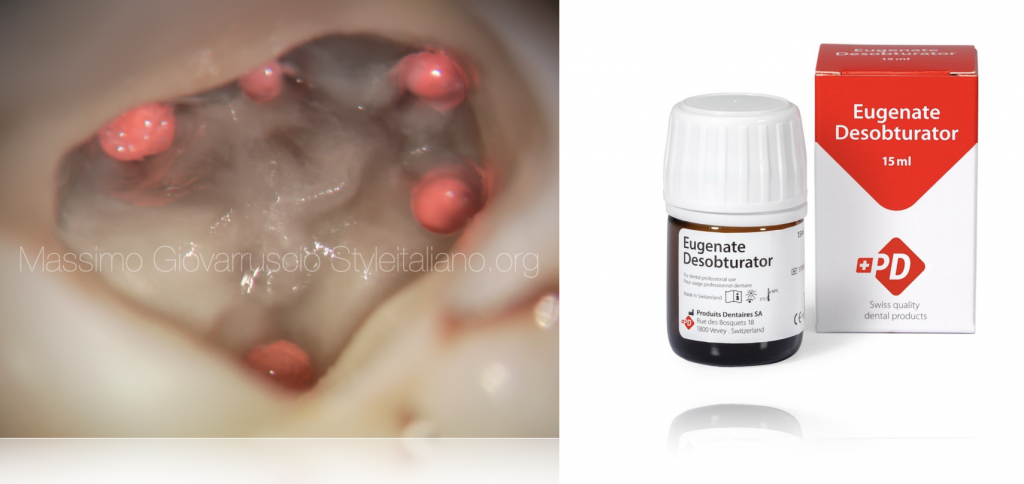
How to remove Eugenate-based cements and gutta-percha
29/06/2020
Massimo Giovarruscio
Warning: Undefined variable $post in /var/www/vhosts/styleitaliano-endodontics.org/endodontics.styleitaliano.org/wp-content/plugins/oxygen/component-framework/components/classes/code-block.class.php(133) : eval()'d code on line 2
Warning: Attempt to read property "ID" on null in /var/www/vhosts/styleitaliano-endodontics.org/endodontics.styleitaliano.org/wp-content/plugins/oxygen/component-framework/components/classes/code-block.class.php(133) : eval()'d code on line 2
The removal of gutta-percha and sealer from endodontically treated root canals is the first step of any retreatment of teeth obturated with these materials. Gutta-percha is the most common obturation material, used in conjunction with various sealers.
The removal of gutta-percha from root-filled teeth is required not only for the retreatments, but also to prepare a space for placement of a post and to build-up the chamber.
To reach this goal, the literature describes a number of techniques, including the use of stainless steel hand files, nickel-titanium (NiTi) rotary instruments, heat-bearing instruments and ultrasonics. In addition, the use of a solvent is recommended to facilitate the removal of gutta-percha by softening it. Some of the most used solvents, among which chloroform, xylene and halothane are almost equally efficient. On the other hand, all these solvents leave some debris of gutta-percha and sealer in the root canals; in addition, chloroform might be a potential carcinogen. Other solvents have been tested: eucalyptol and turpentine oil are slow dissolvers, while orange oil and limonene are promising.
The choice of a solvent is co-determined by factors such as its toxicity.
Solvents use increase the deposit of gutta-percha and sealer remnants on root canal walls and inside dentinal tubules. Since the complete removal of filling material and sealer is a requirement for success in retreatments, a combination of methods may be required to remove them effectively.
Clinical recommendations based on current evidence are included.
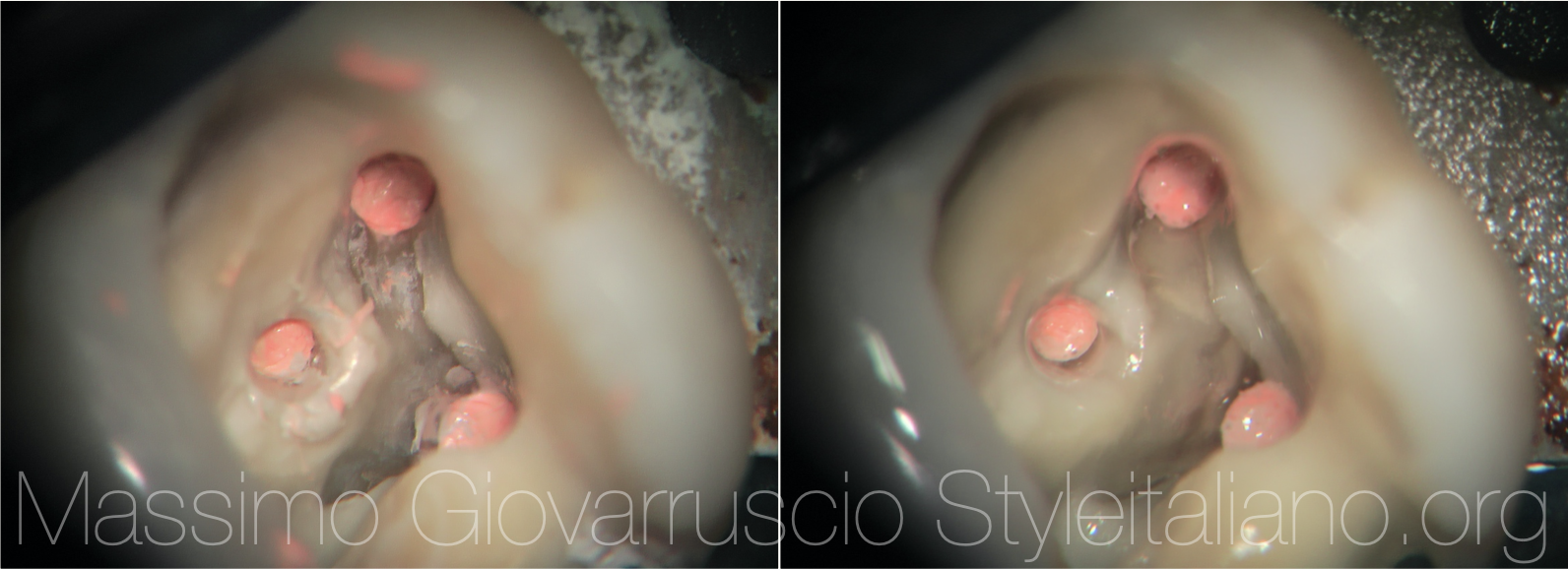
Fig. 1
Fig 1 shows the chamber before (Left) and after cleaning (right). One of the most important steps after root canal treatment is to build-up the tooth using adhesive procedures. To avoid problems with bonding it is imperative to ensure that all remnants of root filling material and sealer have been properly removed. All of this (Eugenol, gutta-percha and filling materials) alters the penetration of dentin bonding agents.
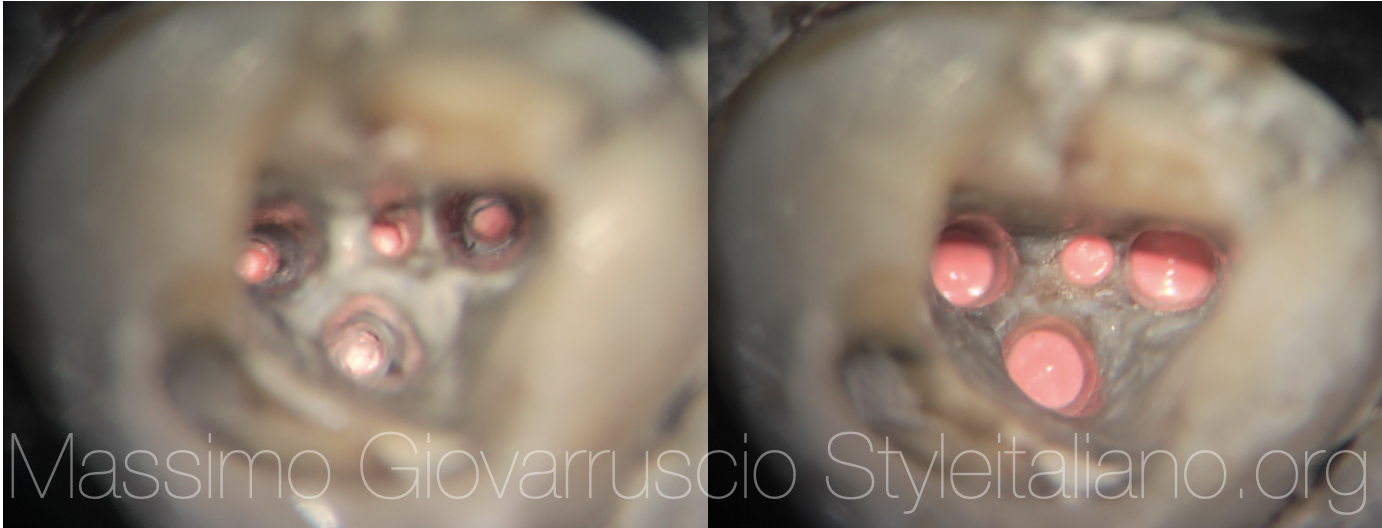
Fig. 2
Figure 2 (left) shows a chamber after root canal treatment using warm vertical compaction and eugenol-based sealer. All the materials staining the pulp chamber should be completely removed. Fig 2 (right): the chamber has been cleaned using Eugenate Desobturator ands is ready for the adhesive procedures.
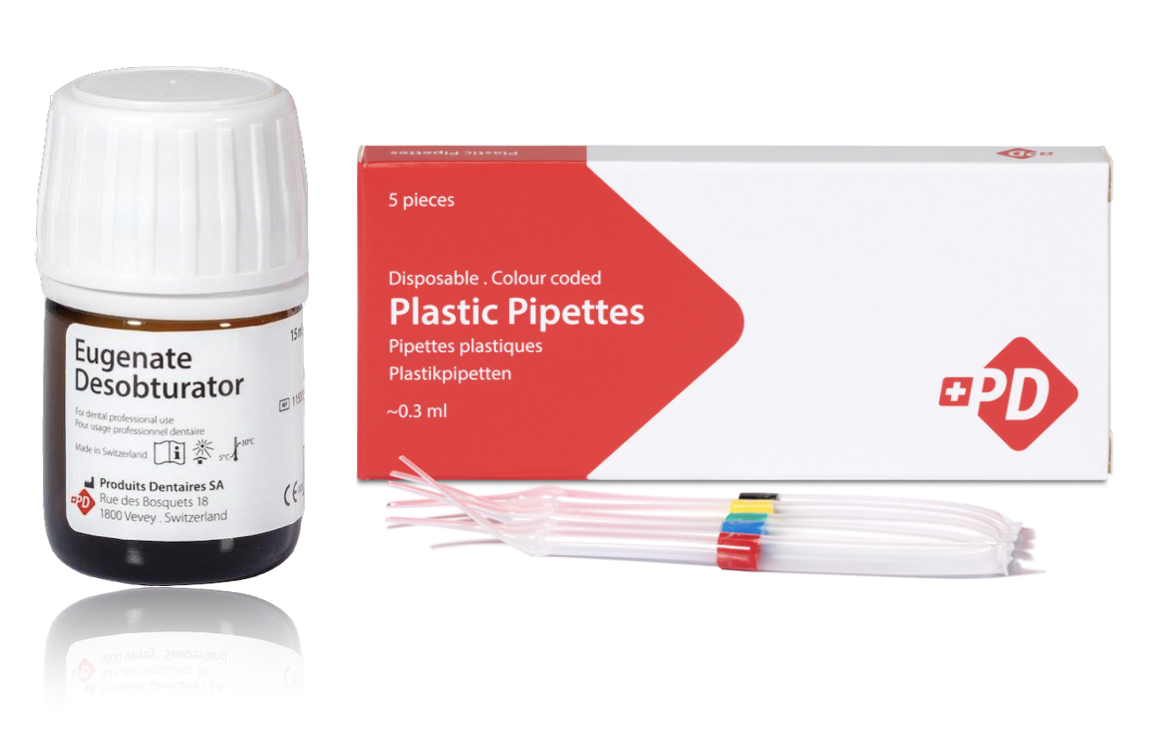
Fig. 3
A new product made by Produits Dentaires SA, PD™ Eugenate Desobturator, was introduced in the market specifically for retreatments. It is a softening solution made of orange oil that helps removing eugenate-based sealers and gutta-percha from the root canals. The softening power is an alternative to the mechanical action of instruments during desobturation. The softening solution can be used when retreating gutta-percha filled teeth, in combination with hand or rotary files.
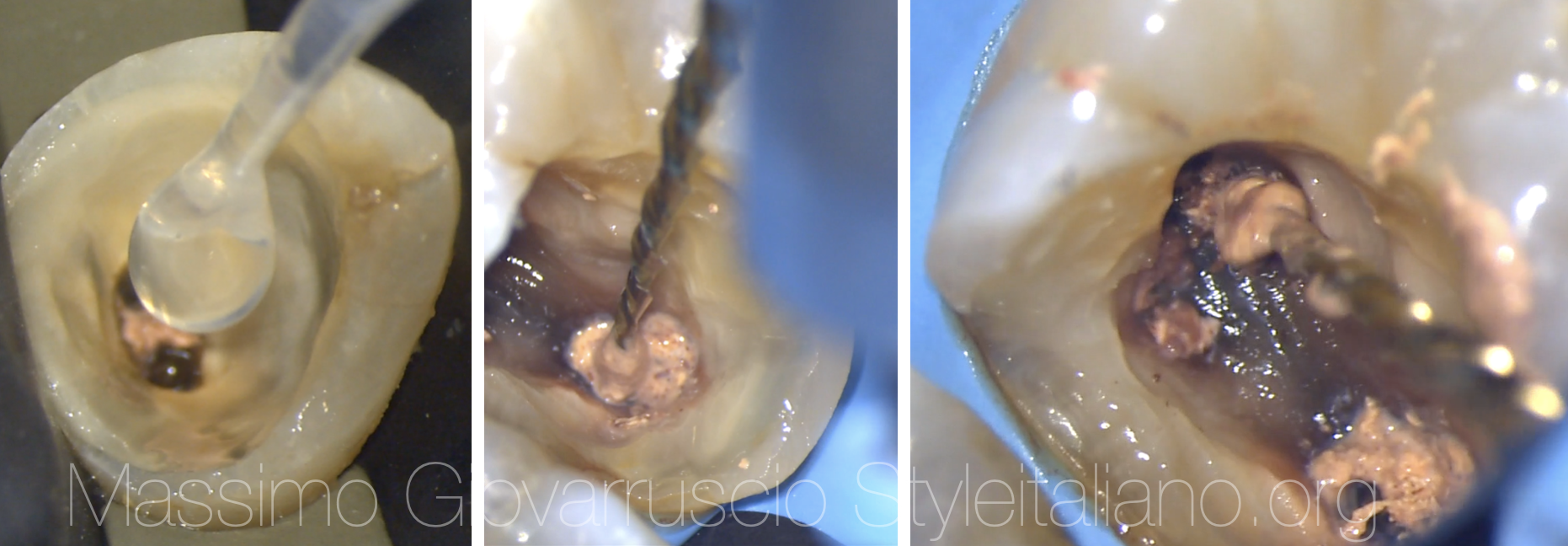
Fig. 4
The protocol is simple: one drop of Eugenate Desobturator, followed by one minute of activation, softens the material. The plastic pipettes help to introduce the product drop-by-drop directly into the canal.
Eugenate Desobturator has a natural orange scent for patient and user comfort too.

Fig. 5
The same product can be used easily after root canal obturation to clean the chamber and to remove the excess of sealer (eugenate base cements) and gutta-percha, so the adhesive build-up procedure is not compromised.
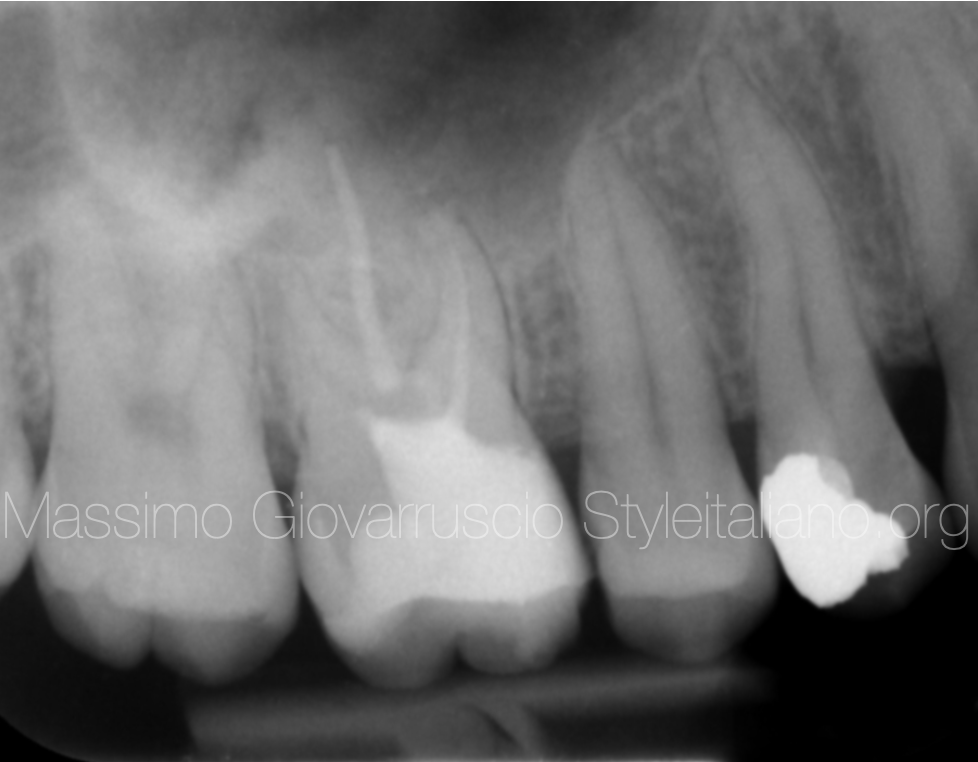
Fig. 6
Here is a clinical case.
The patient was referred to retreat the upper right first molar.
The PA shows an incomplete root canal obturation and the presence of apical radiolucent area.
The tooth was tender to percussion and there also was a fistula on the buccal side between DB and MB root.
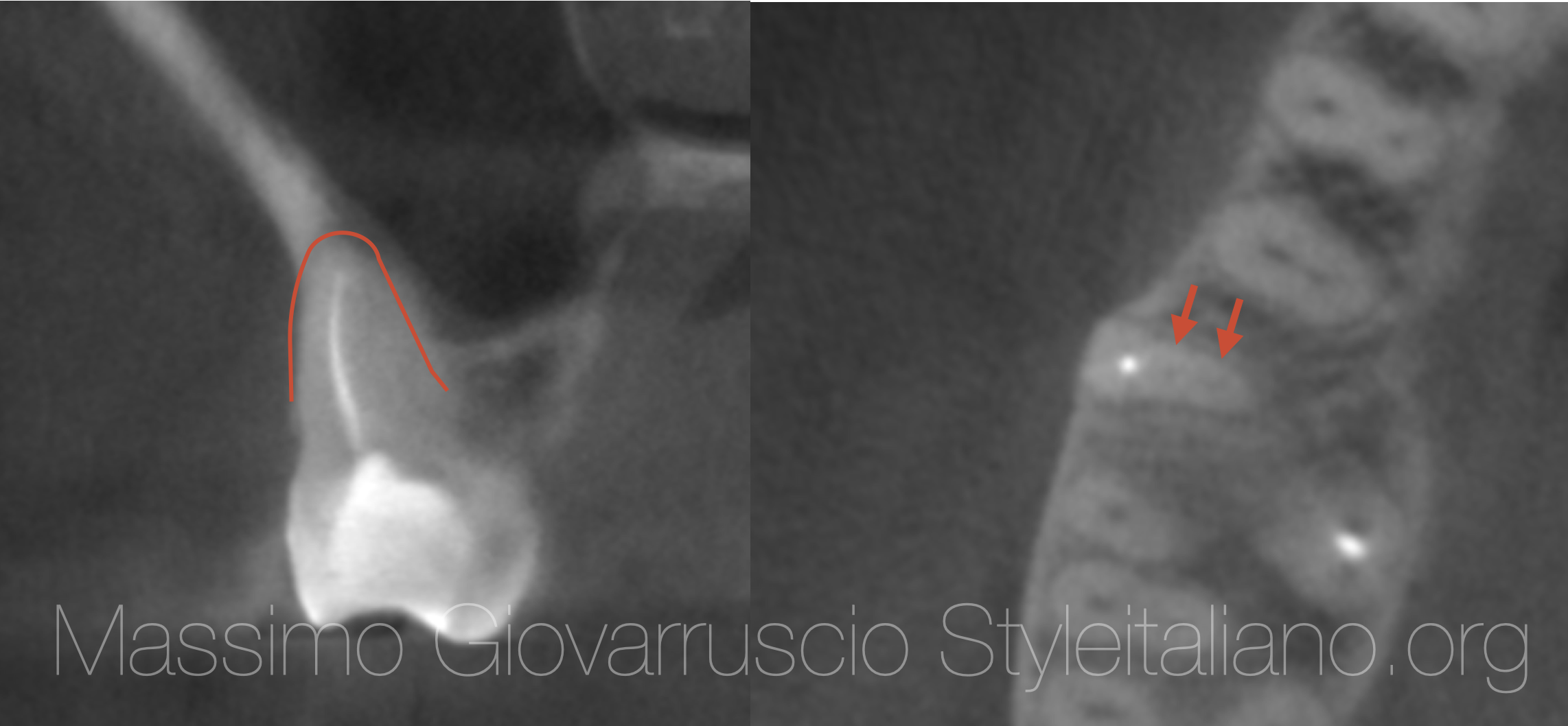
Fig. 7
The CBCT Scan shows on cross sectional view, a large Mesio-Buccal root. It is also easy to appreciate on the axial view the presence of additional MB2 and MB3 canals.
The video shows the retreatment phases
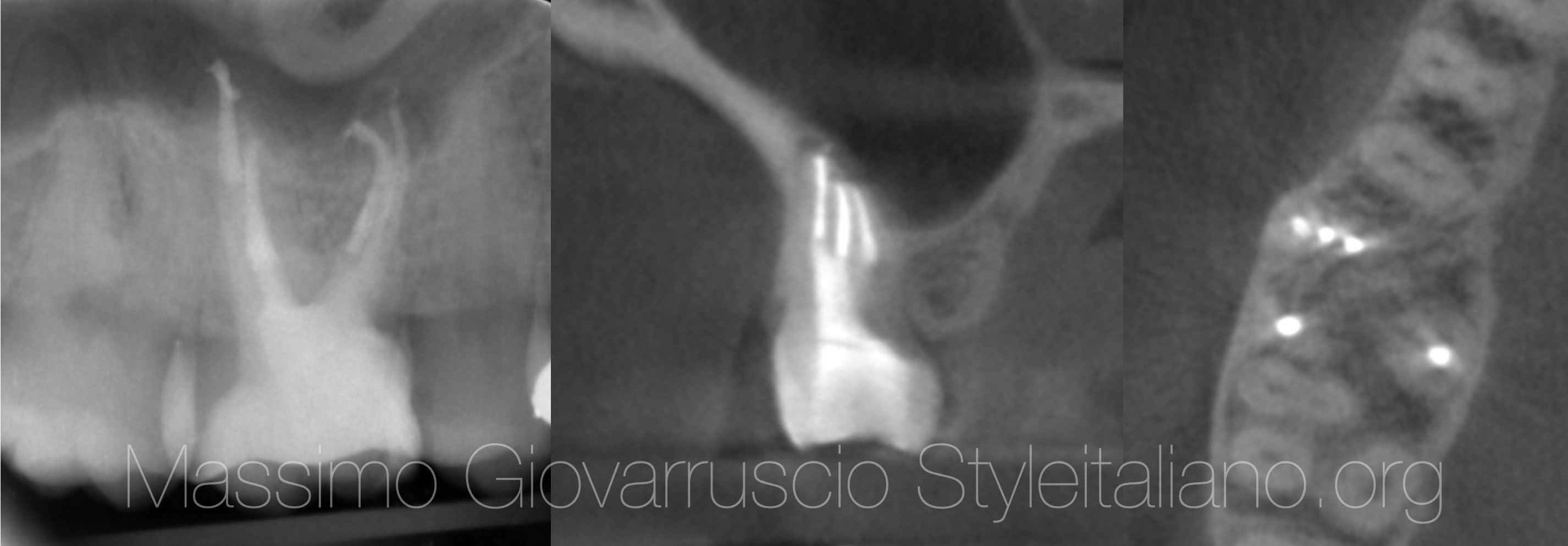
Fig. 8
The CBCT Scan taken 6 months later shows a good healing of the apical lesion.
The cross sectional view shows MB1, MB2 and MB3 obturated separately. It is also easy to appreciate on the axial view the presence of MB1, MB2 and MB3 canals.
Conclusions
When nonsurgical retreatment is indicated, an efficient removal of the filling material from the root canal system is essential to ensure a favorable outcome of the therapy.
Several techniques can be used to remove the gutta-percha, including the use of stainless steel hand files or rotary instruments. The use of a solvent is recommended to facilitate the removal of gutta-percha by softening it. Softened gutta-percha is less resistant and easier to be penetrated and removed.
Eugenate Desobturator is a softening solution made of orange oil that helps removing eugenate based cements and gutta-percha. The softening solution can be used during retreatments of gutta-percha filled teeth and to clean the chamber before the build-up restoration with no contraindication.
Bibliography
- S D Horvath, M J Altenburger, M Naumann, M Wolkewitz, J F Schirrmeister."Cleanliness of Dentinal Tubules Following Gutta-Percha Removal With and Without Solvents: A Scanning Electron Microscopic Study” Int Endod J. Nov 42(11):1032-8; 2009
- Gordon MPJ. “The removal of gutta-percha and root canal sealer from roots”. N Z Dent J Jun;101(2):44-52, 2005
- Khedmat S, Hashemi A, Dibaji F, Kharrazifard MJ. “Effect of chloroform, eucalyptol and orange oil solvents on the mictohardness of human root dentin”. J Dent (Tehran). Jan;12(1):25-30. 2015
- Good ML, McCammon A. “An removal of gutta-percha and root canal sealer: a literature review and an audit comparing current practice in dental schools”. Dent Update Dec ;39(10):703-8. 2012
- Çanakçi BC, Er O, Dincer A. “Do the Sealer Solvents Used Affect Apically Extruded Debris in Retreatment?” J Endod 2015 Sep;41(9):1507-9
- Barbosa SV, Burkard DH, Spångberg, LSW. “Cytotoxic effects of gutta-percha solvents” J Endod 1994 Jan;20(1):6-8

